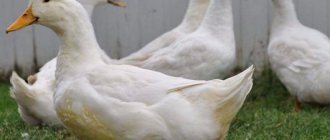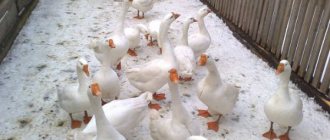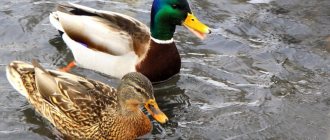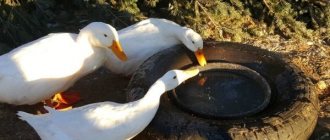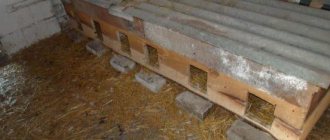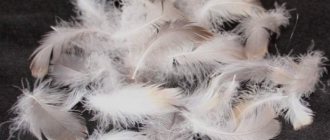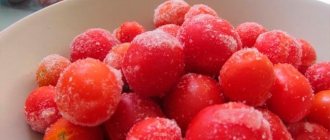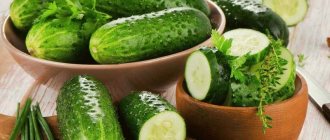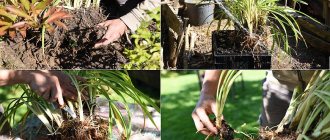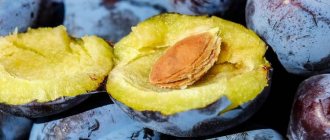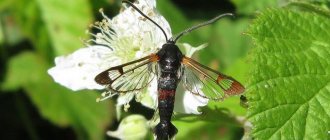Duck breeding has become a popular area of poultry farming. The meat of these birds is famous for its nutritional value and taste. However, before cooking, you need to pluck the duck first. You can do this at home using one of the methods. The plucking process is not easy and requires preparation. However, even a novice farmer can clean and cut up poultry. You need to study a step-by-step description of the process or observe the work of a more experienced person.
Subtleties of quick plucking
The procedure for plucking a duck usually requires certain knowledge and skills. Various methods are used to clean poultry carcasses. This can be done in both traditional and alternative ways. The farmer himself chooses based on the following factors:
- number of slaughtered birds;
- availability of tools and devices;
- personal preferences.
To remove feathers from a carcass, you should equip yourself with the necessary equipment for the job. Before you start plucking a slaughtered duck, it is important to pay attention to the main subtleties of this process:
- The main rule is not to slaughter a bird that is undergoing seasonal molting. During this period, feathers are difficult to remove from the duck's body.
- Immediately after slaughter, it is better to remove the carcass to a cold place where the temperature is maintained no higher than +5 ℃. In this case, the duck meat will become more flavorful and drier, as excess moisture will evaporate. In addition, the fat will harden a little. It is recommended to keep the bird carcass in the cold for 2–3 hours.
- It is better to carry out the procedure for cleaning a slaughtered duck outdoors , for example, in the yard. When plucking, there is usually a lot of debris.
- First, feathers are pulled out from the tail and wings, and then from the back and chest. However, if there was no blood during slaughter, it is also permissible to start in the reverse order. That is, first clean the back, then the chest, and after that the wings and tail.
- It is recommended to direct movements along the line of plumage growth. This rule especially applies to large feathers; small ones are pulled in any direction.
- Feathers should be plucked in bunches, not one at a time.
- It is important to act confidently and firmly ; smooth and careful movements are not suitable here, otherwise the procedure will drag on for several hours.
Removing duck feathers in the field
Proper handling of ducks after shooting can reduce waste and delay spoilage of the kill. In field conditions, game often immediately becomes food. You won't be able to enjoy the dish if you don't know what to do with the feathers and internal organs. The course of action directly depends on what will be done with the meat.
Killed ducks
In addition to immediate delivery home in its original form, there are two options for the development of events:
- With feather plucking . More often used for storage on the road and transportation home, especially in cases with a large number of carcasses.
- With the removal of skin along with feathers . More suitable for cooking directly in the field.
In any case, with a wild duck you should adhere to several rules:
- sanitation _ During the course of its life, game swims in pond waters, gets dirty with mud, and gets insects in its feathers. Dogs often bring prey to their owner in their teeth. Therefore, the first rule of the hunter is to wash the duck, clean it of feces and adhering earth (especially pay attention to the under-tail area). The bird should also be examined for parasites, skin growths, and fungal rashes. Their presence indicates an individual’s illness. Eating such meat is not recommended;
- storage time . If the air temperature is below +5C, it can be stored in any form for up to 5 days without refrigeration. Other weather necessarily requires the use of a refrigerator;
Portable refrigerator for storing game
Prices for cooler bags
Cooler bag
- removing the bullet . The shot or single bullet should be removed immediately after washing the duck. There will be a scorched piece of meat around the wound, which can ruin the taste of the entire carcass. Finding the hit point is made easier by the simplest and smallest metal detector. The pulp with the bullet is cut out in a neat circle. The resulting hole is washed again with clean water.
You need to cut a bullet out of a duck
Only after checking all factors can the bird be placed in storage or begin cutting.
Removing feathers from skin
Removing feathers along with the skin is faster and easier, especially when it comes to field conditions. Experienced hunters also advise using this method if the duck’s skin has a distinct orange tint. This color indicates that the bird fed mainly on shellfish. This means that the skin of the individual will have a lot of fat and taste like pork.
Skinning can be carried out immediately after slaughter or over time.
Skinning a duck
You will need to prepare wire cutters and a sharp knife. The work algorithm looks like this:
Step 1: Cut off the legs. The incision is made as close to the body as possible. It is convenient to use wire cutters, but you can also use a knife. It is not necessary to throw away this part of the body. It makes a rich, tasty broth.
Duck legs
Step 2. Separate the wings. The joint closest to the body is twisted with pliers, it is separated and the only attachment remains a piece of skin. The final cut is made with a knife, capturing the armpit. Some people prefer to break the connection with their hands. As an option, amputate the extreme part of the wings, trim the skin from the edge of the remaining part to the armpit. Completely cut wings are suitable for broths. The top phalanx contains meat, so it can be fried and baked.
Duck wings
Step 3. Define the sternum. Place the bird on its back and feel the breast. Having found a bone, press it firmly. The skin will begin to separate and will be easy to pick up with your fingers and cut. To make it easier to find the right bone, preliminary plucking some of the feathers from the sternum will help. With them it is more difficult to feel the hardness, since they create a soft “cushion”.
The chest bone is indicated in the figure under No. 19
Step 4. Separate the skin. Use your hands to pull the cover away from the chest in different directions, similar to the principle of removing a jacket. The fingers are inserted into the cut made earlier. If it was not there, the skin is torn with a stronger and sharper tension. The bird should lie on a hard, clean surface (do not place it on bare ground). In cases where there is no improvised table, the plucker presses the duck carcass with its back to his chest and gradually pulls the skin over himself like a shirt.
The skin is removed from the chest
Prices for meat cutting knives
Meat knife
Step 5: Remove skin. After separation from the breast, the cover continues to be pulled from the shoulder joints and folded back near the tail. In this case, the tail feathers are not removed. The pairs of wings and legs have already been cut off, the armpits have been notched, so the “stocking” will be removed without any extra effort right up to the neck. As a rule, a knife is no longer required, although the skin is quite dense and sticky. The process is carried out without sudden movements, carefully.
Procedure for removing skin and feathers
The resulting skin can be thrown away or used to make a stuffed animal. Meat should be washed, cooked or frozen.
Plucking immediately after slaughter
Removing feathers from freshly killed game is preferred by most hunters. This is convenient from the point of view of cleanliness in the house, freezing and cooling in portable equipment. In addition, many people know that the crispy skin on fried or smoked duck is a gourmet treat. It prevents fat from leaking out and drying out the meat by fire, and it preserves the specific aroma for which the race for the bird is started.
As a standard, the process proceeds in the usual dry way. Then the carcass is singed over a fire, the head, paws, and lower phalanx of the wings are cut off and gutted. The semi-finished product is sent to the smokehouse, to the fire or spit, or to the kettle.
Ducks are plucked in the field using the dry method.
However, experienced hunters do not like to spend a lot of time plucking feathers in the field. They prefer to use wax instead of tweezers and fingers. The operation is much faster. You can also use this trick at home.
Ducks before wax plucking
Required tools:
- large cauldron with boiling water;
- a similar boiler with cold water;
- a piece of paraffin wax;
- knife and wire cutters.
Tools needed for plucking ducks immediately after slaughter
Paraffin can be bought in stores like “Hunting and Fishing”, hobby shops and departments with manicure supplies. Each bird requires 1 small block (about 10 by 10 cm). The wax plucking step by step looks like this:
Step 1. Remove legs and wings. Use the usual method using wire cutters and a knife. If necessary, these parts can be left in place for further identification of the type of carcass. Some hunters advise leaving the legs to hold the duck during further stages of processing.
Step 2. Pull the tail feathers from the tail and the flight feathers from the wings (if they are left). You need to pull according to height. They can even be done by hands without tweezers.
Step 3. Pluck the largest feathers from the body against the growth direction. It is better to pull and tear off using the grip of your thumb and index finger. Temporarily set the carcass aside on a clean surface.
Step 4: Prepare pots full of freshly boiled and cold water.
Step 5. Remove the container with boiling water from the heat. Melt a block of wax in it. The desired state is when a thin film of paraffin floats to the surface.
Plucking wax from a hunting store
Step 6: Dip the game. With a quick movement, immerse the duck in the layer of wax that has collected on the surface. It is advisable not to tear the paraffin film so that it completely envelops the carcass. Hold for no longer than 2-3 seconds. Overheating threatens bursting entrails and spoilage of meat.
Step 7: Immediately transfer the bird to a bucket of cold water. Dip for 1-2 minutes until the wax sets. It is also important not to overdo it.
Step 8. Perform “epilation”. Squeeze the bird in the belly area. The coating will crack. Now it’s convenient to remove the wax in pieces. Rip off all the paraffin.
The result will be a duck with smooth flesh-colored skin with a slight pink tint. There is no need to singe such a carcass anymore.
Used wax can be heated, filtered, cooled and reused. An alternative to paraffin is boiling resin. The principle of operation is completely similar.
Video - Plucking a duck with resin
Gutting
In field conditions, after plucking, it is preferable to immediately carry out gutting.
Step 1. Cut off the head. If the skin with feathers was removed, at this stage you need to pull the skin behind the head and cut the connection between the neck and body with pliers. When plucking, simply cut off the neck as close to the shoulders as possible.
Step 2. Amputate the tail. The tail is a small piece of fat at the rear of the carcass. Use pliers or a blade to separate this piece in a circle.
This is how you cut off a duck's tail
Step 3. Cut the ribs. Below the ribs the duck has no meat. The easiest way to remove the internal organs is to make an incision between the base of the chest and the rest of the cavity. Using a knife, you need to rip several strips under the breast bone. It’s better to start from the sides, moving towards the center. When the cuts are made, fingers are inserted into the middle ones. Then it is enough to pull towards yourself with a careful but forceful movement. The top of the bird must be held firmly with the other hand. The peritoneum will come off along with the intestines. Often the liver and heart come out at the same time.
The evisceration incision passes under the sternum
Step 4. Remove the liver and heart, if they have not come out earlier. Cut off the stomach. Separate the bile sac (green capsule) from the liver. These organs can be removed from the top if for some reason the intestines are not removed with the peritoneum and there is a risk of touching them. Bile and intestinal contents should not be allowed to leak onto the meat. This will spoil its taste.
Duck giblets
Step 5. Draw out the remaining esophagus. Cut off a piece of pulp with a bullet, if this has not been done previously. Rinse the carcass.
The most valuable part of a duck is the breast fillet. In order to save space, meat hunters immediately separate only it. In this version, the process looks slightly different. After bending the skin up to the neck, they step on the head with one foot and on the paws with the other. The skin is placed under the back, the belly is turned upward. The breast is pulled out, the rest of the carcass, including the organs, remains on the ground. The belly is trimmed under the fillet. They insert their fingers under the bone near the fork on the neck. With the other hand, grab the sternum bone near the lower ribs. All that remains is to firmly but slowly pull the meat, rocking the skin back and forth. It will come out along with both wings if they have not been amputated previously.
Duck fillet
When to start
There is a widespread belief among novice poultry farmers that duck plucking can begin immediately after slaughter. This is fundamentally wrong. After poultry has been slaughtered, there is still a lot of fat left on the skin. If you get down to business right away, it’s easy to damage the bird’s skin.
It is recommended to begin the process of plucking duck feathers 2-3 hours after slaughter.
Some farmers even advise putting the carcass in a cool place at this time, for example, in a cellar or refrigerator. Once cooled, the duck fat will solidify on the skin. Then you can safely begin the procedure without fear of damaging the skin of the slaughtered bird.
It is worth remembering that you need to pluck feathers according to the rules, that is, moving in the direction of growth. Inaccurate and careless cleaning of the duck will result in the presentation of the poultry carcass being damaged.
Feedback from netizens on how to pluck a duck
Place the duck on a pre-prepared sheet or paper and start plucking out all the large feathers. It is best to tug at the growth so as not to damage or tear the skin. Afterwards, start plucking the chest, smoothly moving to the neck and back. When all the fluff is removed, small hairs may remain on the body. It is difficult to remove them, so most often the carcass is rubbed with flour and singed. To get rid of hairs, just hold it over the fire for a couple of seconds. But you should not hold it for long, so that the subcutaneous fat does not melt and the skin does not burn. At the end, wash the carcass and remove soot.
A duck can be plucked in two ways: dry (immediately after slaughter) and wet (3-4 hours after slaughter).
Dry: the bird should still be warm; pluck with the bird lying on your knees upside down (this is more convenient). Wet: immerse for a minute in hot water, but not boiling water (70-80 degrees), and then remove the feathers. The bird is then hung by the legs and plucked as quickly as possible. This method has a drawback: duck meat turns red if this procedure is performed immediately after slaughter qqq_.
If you plan to store poultry, it is better to use the dry plucking method. Don't forget to singe the carcass.
The duck should be wrapped in a wet thick towel or matting. The towel should be well moistened and wrung out a little, just so that the water does not flow. And then we need a duck. iron with a very hot iron :). Iron it thoroughly until it sizzles and steams. Boiling water sometimes actually causes the feathers to come off along with the skin. And never from the iron! Only feathers. If in some hard-to-reach place the feathers remain unsteamed, the procedure can be repeated at the “local” level: again thoroughly moisten the towel and iron it))).
After all the feathers have been removed, the duck must be scolded. To do this, you can use a piece of lit dry alcohol.
Wild duck is your trophy
Most modern city housewives rarely have to pluck a bird, much less a duck, and especially one that was shot by her husband. Supermarkets, as a rule, sell ready-plucked carcasses, so the question of how to pluck does not arise.
Preparing for plucking
You can pluck a duck quickly and effortlessly if you prepare properly for the procedure. It is necessary to take into account the age of the bird and plan slaughter in advance. It is believed that the best time for this is when the duck has reached 60–70 days of age. For an Indian duck, this period is three months. By this time, the ducks already have plumage. The timing of slaughter largely depends on the breed of bird and the characteristics of natural molting.
If the feathers are not yet too long, experienced farmers advise waiting until they grow to a length of 10–15 cm.
However, it is not recommended to delay the slaughter deadline too much. If you do this too late, you will no longer be able to pluck the duck without stumps, which remain on the skin when feathers that are too short are pulled out. Such defects, as a rule, worsen the appearance of the carcass. In addition, the quality of the meat suffers because of this.
Preparing a domestic duck for slaughter and plucking takes place in several stages:
- 12–15 hours before the intended slaughter, the bird is given only water. It is not recommended to feed the duck so that it has a clean stomach, esophagus and crop.
- The night before slaughter, the birds are placed separately from the rest of the flock.
Most often, ducks are slaughtered by cutting an artery in the neck or cutting off the head completely. Then the carcass needs to be hung so that the blood drains. This will take approximately 10 minutes. Only after the blood has drained do they begin to prepare the duck carcass for cleaning of feathers.
Plucking methods
There are two methods for plucking a duck at home: dry and hot. Each method has advantages and disadvantages.
Advantages of dry plucking methods:
- easy to do;
- a minimum number of tools is required;
- it is possible to store a plucked duck carcass in the refrigerator;
- the natural color of the skin is preserved;
- fluff and feathers can be used in the future.
Disadvantages of dry methods:
- stumps remain;
- fluff flies in all directions;
- it takes a lot of time.
Advantages of hot plucking methods:
- can be used in field conditions;
- can be applied at any time after slaughter;
- the bird is cleaned better and no stumps remain;
- easier to pull out feathers;
- It is possible to pluck a duck much faster.
Disadvantages of hot methods:
- you can burn your hands;
- the carcass cannot be stored after plucking;
- the skin becomes red;
- down and feathers are unsuitable for further use.
Plucking technology at home
There are different ways to pluck a home-raised duck. Existing methods are divided into two groups. The duck is plucked either dry or hot. You can remove feathers from the carcass manually or using various devices.
The choice of method depends on the preferences and capabilities of the owner. It cannot be said that any particular method is better or easier. Skill and personal preference are important here. At the same time, we should not forget about the need to know the technical nuances, without which it is impossible to properly and efficiently clean the carcass from feathers.
Dry method
The method is considered the simplest. Those who decide to dry pluck a slaughtered bird will not need any special equipment. All you need is running water. This method is suitable for warm duck. The disadvantage is the risk of damaging the skin by pulling out the feathers.
So the dry method is not used by farmers who raise poultry for sale.
Sequencing:
- The duck is placed on a stable surface covered with newspaper or tarpaulin.
- They start plucking from the wings. Then the duck’s back, chest area and neck are sequentially processed. First, get rid of large feathers.
- The remaining fluff is removed by holding the duck over an open fire. Sometimes a non-sharp knife is used instead.
- Finally, it is recommended to wash the cleaned duck under running water.
Hot method
When using this option, the carcass should first be scalded. This is already a professional approach to feather removal. Pre-scalding allows you to quickly pluck the duck. In addition, the result of the work becomes better.
Execution technology:
- Bring water to a boil in a large saucepan and turn off the heat.
- Cool the liquid to 80 ℃.
- Place the duck in the pan for 60 seconds.
- After this, pluck the bird, starting with the wings. Then the tail should be cleaned. It is permissible to pull out feathers in any direction.
- The neck, back and chest are treated last.
- The finishing touch is to singe and rinse the plucked duck.
Using a screwdriver
At home, you can pluck a slaughtered bird using a screwdriver attachment. This is the so-called mechanical method.
Not only a screwdriver is suitable for cleaning. A drill, hammer drill or other tool that performs rotational movements is also used. The main thing here is to secure the nozzle well.
The sequence of actions for this processing method is the same as for dry or hot methods:
- First of all, you need to remove the feathers from the duck's wings.
- Then the tail is plucked.
- Finish the work by cleansing the chest and back area and neck.
- Rinse the duck carcass.
Using a bag and iron
You can also remove feathers from the carcass using an iron and a cloth bag. This option is often used by owners of private farms and allows you to pluck ducks without stumps.
Sequence of the procedure:
- Place the bag in boiling water for 10–15 minutes.
- After this time, remove the fabric and wring it out.
- Place the duck in a bag and lower it into a container of hot water (80 ℃).
- Heat the iron, take out the bag and iron the duck directly through the fabric.
- After all the manipulations, you can easily pluck the “ironed” bird by hand.
Using wax
Another option for the hot method of cleaning duck. It is often used by hunters for plucking game. However, you can also treat a domestic duck with wax.
Sequence of work:
- First, it is recommended to remove the bird's wings.
- Then pluck the tail part.
- Remove large feathers from the chest and back of the duck.
- Take two containers - with hot and cold water.
- Melt the wax in boiling water.
- Lower the carcass into the same container so that it disappears into the water. It is not recommended to keep the duck in boiling water with wax for a long time, so as not to burst the skin.
- Transfer the bird to a container of cold water.
- Take out the duck, press on the carcass to crack the wax, which then needs to be removed.
When using this method, you do not need to pluck the feathers. All excess will be removed along with the wax.
Dry methods
The dry method is only suitable for warm carcasses aged no more than 4 hours. It is recommended to start instant plucking after slaughter only if you have sufficient experience in the procedure. In the first hours, the skin tears especially easily.
Plucking a duck
Dry plucking method
The method is good with a minimum of tools. Enough large and small tweezers, containers for feathers and fluff, and a knife with a blunt blade.
Step 1. Place the bird on your lap or a hard surface (preferably covered with cloth or paper).
Step 2 . Pluck feathers in bunches of 5-6 pieces in the direction of growth from the chest and neck to the back, wings and tail. Try to remove the beam in one movement, but without excessive sharpness, so as not to tear the skin.
Step 3. Remove the remaining small feathers and hairs with a blunt knife. Press the blade against the carcass with slight pressure and draw it against the growth line. In this case, it is advisable to press the bristles onto the knife with your thumb.
Step 4. Wipe the finished carcass dry with a clean cloth.
Dry plucking
singeing
Singeing is not an independent method, but it is classified as dry processing. It is used as a step to get rid of small feathers, fluff and hairs from the carcass. It is important not to overexpose the duck over the fire so that it does not char, burn, start to fry, the skin does not crack and the fat does not melt. Use any gas burner or open fire with a moderate flame.
Gas burner nozzle
Step 1. Dry the bird and hold it so that all the folds are straightened. Stretch the wings to the sides without any extra effort.
Step 2. Bring the carcass to the burner, keeping a certain distance. Carefully turn in different directions for better processing. Take your time and don’t let the fluff burn for too long. At the right distance, the feather stumps fall out of the skin, but do not burn in it.
An example of singeing a bird with a gas torch
Step 3. Rinse the resulting product with cool running water.
The plucked duck needs to be washed
For the best effect, experts suggest rubbing the bird’s body with flour. It quickly collects moisture and prevents the skin from catching fire. The only drawback of this design is soot. But it is washed off at the end of the process along with the remaining flour.
If you use a miniature haystack or bundle of straw for searing, the duck meat will acquire an appetizing, slightly smoked aroma. This property is highly valued by restaurants.
Video - Master class from a hunter on dry plucking and singeing ducks
singeing
It is not always possible to remove all feathers, especially small ones, and fluff. To completely clean the carcass, a singeing procedure is carried out. To do this, after plucking, the bird is held over the flame of a gas burner, a cube of dry fuel, or another source of fire. The carcass needs to be stretched well and the folds straightened out.
The duck should not be brought close to the fire - the stumps and fluff should fall out or char, and not burn with a bright flame.
The carcass is singed for no longer than two minutes, otherwise the skin will begin to burn and the fat underneath will melt.
How to gut a duck?
Immediately after plucking and singeing, you can gut the duck. Many novice cooks do not know where to start and how to cut up a duck. To do this, you need to know some features of this fairly simple process:
- Cut off the tips of the wings with a sharp knife. After this, exactly at the joint, break and cut off the legs. Next, make a transverse incision in the area of the larynx and carefully remove the trachea from there. Then make a cut in the lower part of the belly of the carcass (this is the place where the bone base ends). Make all cuts carefully so as not to cut the thin walls of the intestines and remove the insides, maintaining their integrity.
- Following this, the intestines, stomach, liver, intestines and heart are removed, and during the gutting process, excess fat is separated, which will later be useful in the household (stewing, frying, etc.). A duck gutted in this way is thoroughly washed with water to remove blood.
How to pluck a wild duck
It often becomes necessary to pluck a wild bird caught during a hunt. In this case, a person, as a rule, does not have any tools at hand. Therefore, most mechanical methods are not suitable here. The only hot method that hunters use is to remove feathers using melted wax. But you can pluck a caught bird this way only if you have everything you need at hand.
The dry processing method is mainly used to clean wild birds. In this case, no tools are needed, and cold water will always be nearby.
Birds caught during hunting are usually not intended for sale. Therefore, damage to duck skin does not play a role during cleansing. After all, when using the dry method, it is almost impossible to pluck a hunting trophy without leaving stumps. However, a carcass that is not very attractive in appearance is also suitable for home consumption. In addition, the method is good due to its simplicity and accessibility. So, dry plucking is considered the most suitable option for processing wild ducks immediately after hunting.
Mechanical methods for removing feathers
Modern developments by specialists and amateurs offer mechanical devices for plucking birds. There are attachments for drills and entire machines.
Pen removal machine
Pen removal attachment
The attachments are wide bits with rubber fingers. It is difficult to remove flight feathers with them, but they cope with smaller ones quite successfully. The video below shows what the nozzle looks like and how it works.
Video - How to pluck a bird using a nozzle
Plucking machines are larger in size, but more efficient when processing a large number of carcasses. The ducks are placed in a drum with fingers, which spins like a washing machine. Craftsmen make such units from just such old equipment. The second option for an amateur feather picker is a large pan with a motor.
Prices for feather removal machines
Feather removal machine
Video - DIY feather removal machine
Video - Removing machine from a pan
Duck carcass storage methods
Preservation of feathers and down
To properly pluck a domestic duck, you need to remove all feathers and fluff from the carcass. However, this waste should not be thrown away. Duck down and feathers will certainly come in handy: they can be used to make a pillow or blanket. The easiest option is to hand over the raw materials to special collection points.
To preserve the plumage remaining after plucking a bird, you need to:
- Rinse the down in warm water with washing powder dissolved in it:
- soak the feathers for 2 hours in a soap solution;
- Rinse the remaining feathers under cold running water, then squeeze well;
- Place clean fluff in a fabric bag and dry in a sunny place.
It is important to remember that the washed raw materials must be stirred periodically, otherwise they will cake.
Should fluff be preserved?
Natural duck down is of great value, so it is important to keep it in good condition. Feather and down are used for down jackets, blankets are sewn from it, but more often they are collected for pillows. You can get rid of dirt and grease on feathers using washing powder by soaking them in water.
The pen can be saved for later use
After just 10 minutes, the feather can be washed and dried by placing it in a woven bag and hanging it in a well-ventilated area. The contents need to be shaken periodically. High-quality material has a long service life, it can be used for up to 10 years.
How to butcher a duck
To prepare delicious dishes from duck meat, it is not enough to simply pluck the bird. You also need to know how to properly gut a cleaned carcass.
When cutting a duck, it is recommended to follow a certain technology:
- the evisceration process begins with the removal of the esophagus, trachea and crop from the carcass;
- remove the digestive organs and intestines;
- sebaceous glands are removed;
- cut off the edges of the wings, neck and paws;
- The carcass is cut open in the chest area and the lungs, liver, stomach and heart are removed.
When gutting a duck, it is important to act carefully so as not to damage the internal organs. Otherwise, the meat will become tasteless or unfit for consumption. The latter can happen if, for example, the intestines are damaged.
After completing the duck gutting procedure, you can proceed to the actual cutting of the carcass. If you plan to prepare a fatty dish, then you do not need to remove the skin from the bird. This is not necessary, since it is under the skin that the fat is located. Otherwise, the skin should be removed and excess fat removed.
To separate meat from bones easier and faster, you need to:
- put the carcass on its back;
- make an incision from the neck towards the abdomen;
- separate the fillet from the bones.
Before gutting and dressing a wild duck, it is recommended to soak the carcass in cold water for several hours. This will help eliminate the swampy smell. You should not do this with domestic duck, as pre-soaking will wash away the nutrients contained in the meat.
Duck cutting
After the duck is completely plucked, you need to gut it. First, the neck is removed, the wings are cut off at the first joint and the legs below the heel joint. Then an incision is made near the cloaca, the intestines are removed and the sebaceous gland is cut out. At the next stage, the crop and esophagus are removed through a hole in the neck. An incision is made on the abdomen. All by-products (stomach, lungs, liver, heart) are extracted through it. Excess fat is removed - it is then melted and used in cooking.
The carcass is washed well and the water is allowed to drain. Duck meat can be used immediately or frozen. If cooking in pieces is intended, then the duck is cut up. The joints separate the legs and wings. A cut is made on the breast along the keel and the fillet is separated. The bone skeleton is left for preparing the first course.
Plucking a duck by hand at home is a labor-intensive process. Heat treatment simplifies it, but it carries the risk of the carcass losing its presentation or causing burns to the performer due to non-compliance with safety measures. If difficulties arise with removing the feather cover, you can carefully remove the skin from the bird - if the presence of an appetizing golden crust on a baked duck is not important, then this method is quite acceptable.
- Related Posts
- How many eggs can you put under an Indian duck?
- Muscovy ducks: photo description of the breed
- Incubation of ducks in an incubator
- What kind of ducks are mulardas?
- How many eggs does a duck lay?
- Why do ducks pinch each other?
Useful tips
In order to pluck a duck raised on a home farm efficiently and quickly, you need to know the rules of the procedure. It is worth listening to the advice of experienced poultry farmers. These recommendations will help make the process of removing feathers and subsequent butchering of the duck easier:
- It is better to pluck birds outdoors. This way there will be no unpleasant smell or large amounts of garbage in the house.
- Before starting the procedure, you need to completely drain the blood from the killed duck.
- You should pluck the bird confidently, with sharp movements, grabbing the feathers with your index finger and thumb.
- Before removing feathers and down, remove the skin from the paws.
- If the feather sits quite deep, then it is better to use tweezers or tweezers. This will prevent damage to the skin.
- Before butchering, wild birds are checked for the presence of shot in the carcass. A duck caught during a hunt is soaked for several hours.
- The gutted and cut up carcass is stored in the refrigerator or freezer. Sometimes farmers resort to salting, which increases the shelf life of meat.
Plucking and subsequent gutting of poultry or wild birds requires certain knowledge and skills. However, with clear instructions, even a beginner can handle the job. The main thing is to follow the rules and act confidently. And then plucking and cutting up a duck, goose or turkey will not be difficult.
"Hot" methods
Two methods are used, involving preliminary heat treatment.
scalding
Before scalding a duck before plucking, prepare everything you need:
- a large saucepan or basin - the volume should be sufficient to immerse the whole carcass;
- bedding;
- dull knife;
- metal tongs;
- gas burner to remove fluff.
The water is heated to a maximum of 80 degrees - there is no need to bring it to a boil. Boiling water will damage the skin during feather removal, and temperatures below 70-80 degrees will not give the desired result. The duck is immersed in a pan (basin) for 1-2 minutes, then removed, hung by the legs, and the liquid is allowed to drain to make it convenient and safe to work. After this, they immediately begin plucking according to the usual pattern, with the only difference being that the rigid rods can be pulled out both in the direction of their growth and against it (the second option is more convenient).
Thanks to steaming, the plucking process is faster and easier, feathers and fluff do not fly apart, but this method has disadvantages:
- the carcass will have to be used immediately; it cannot be stored for long;
- the meat takes on a red tint (but its taste does not change at all);
- down and feathers most likely cannot be used as filler for pillows and blankets.
Steaming through a bag
This method ensures easy removal of the feathers, while the bird's skin remains elastic and does not tear. The meat does not turn red during this treatment. The work is being carried out in stages. First, boil water and immerse a canvas bag in it, leaving it for about 10 minutes. Then it is removed with tongs, allowed to drain, and squeezed out while wearing gloves. The carcass is placed in the bag, wrapped tightly and left for another 15 minutes. At this time, heat the iron to maximum. The bundle is ironed without missing a single section. The resulting steam opens the pores. The bird is removed and plucked in the usual manner. If processing is difficult in any area, then iron it again through a damp cloth.
If you don’t have an iron at hand, then this method is slightly adjusted. The duck placed in the bag is immersed in the same water where it was soaked. The duration of heat exposure is 7 minutes.
